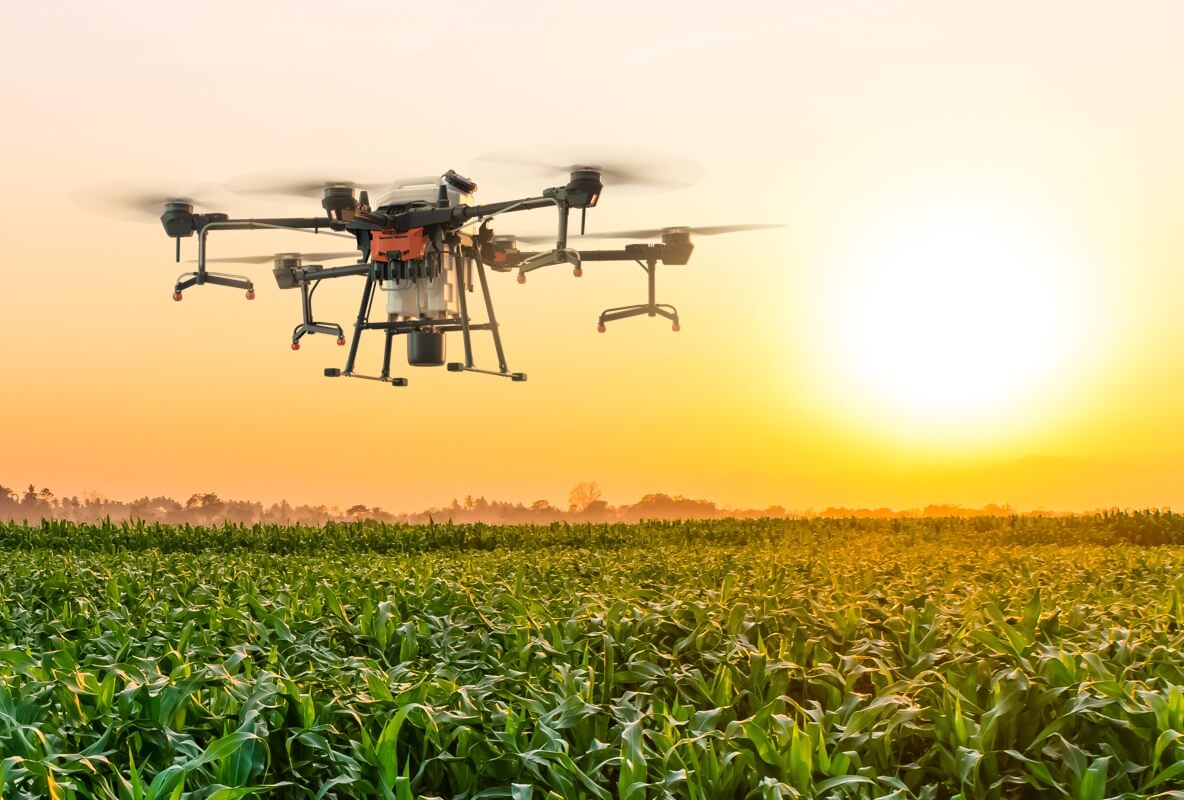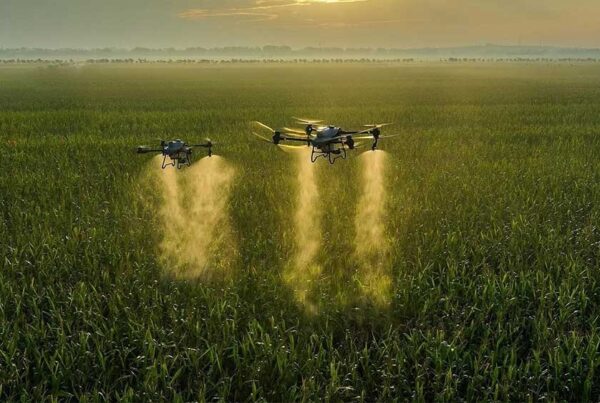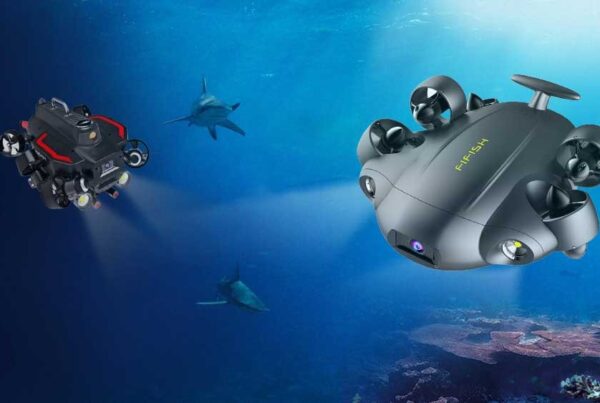
Choosing the best drones for Agriculture: A
complete guide
As we are getting comfortable in a digital era, every facet of every industry is also undergoing a transformation. The same is the case with the agriculture sector. With the goal of producing enough food and remaining sustainable, agriculture needs to adopt technology to ramp up production and increase efficiency. GPS-based high-tech sensing devices, steering systems, remote sensing, variable rate application, and even farm management software are some tech farmers trying to adapt to automate processes and improve the
quality of crops using agriculture drone
But one of the most essential amalgamations of agriculture and technology is a drone. Theuse of drones in agriculture revolutionises the way farmers work. The global drone marketwill shoot from $2.2 billion in 2020 to a whopping $15.2 billion by 2027. Not only that, butdrone use in agriculture is worth almost $30 billion, second to construction in terms of market value.
Agricultural drones are used for two main purposes: mapping and spraying. Depending on what task you perform, you choose the type (fixed-wing and multi-copter drone). If you want to perform agricultural mapping, you can use either a fixed-wing or multi-copter drone. A fixed-wing drone is considerably more expensive and ideal for mapping out large land areas. Although, a multi-copter drone is used for much smaller pieces of land due to their manoeuvrability and ability to fly slowly at lower altitudes.
The other piece of the drone-agriculture matrimony is crop spraying, which is slowly gaining traction day by day. Agricultural drone spraying also used multi-copter drones due to their structure and design. Multi-copter drones make spraying easy. The agricultural drone price in India is a bit on the expensive end, but it is an investment you should make for higher returns. If you want help choosing a drone for your farm, you are in the right place. This article provides a complete guide for choosing the best drones for agriculture. Read on to know more.
Why choose the best drones for agriculture?
Image processing software
One of the biggest functionalities of a drone is surveying the farmland. Hence, image processing software is crucial, as it happens to be an essential component of surveying. To be able to see the entire area that your drone has captured clearly, make sure you buy Unmanned Aerial Vehicles (UAV) equipped with 4K sensors. Although, a lot of the current agricultural drones can take 720p pictures, which is also passable.
Multi-rotor drone or fixed-wing drone
Choosing the type of agriculture drone based on your farmland size is of the essence. This will affect general efficiency. If you have farmland that exceeds 300 acres, then a fixed-wing drone should be your go-to. These are also more expensive. But if your farmland is not industrial-sized, then multi-rotor drones should suffice.
Software
Almost all agriculture drones come with software inbuilt. But, if that isn’t the case, then you can always download important software from Pix4D or Precision Mapper, DataMapper, and Correlator3D.
5 Agriculture Drones That Are A Must-have
DJI Phantom 4 RTK – The best agriculture drone for mapping
The DJI Phantom 4 RTK happens to be one of the most famous commercial-grade agriculture drones. These are consumer drones with professional-grade photo and video capability. The drone comes equipped with a 20MP 1-inch sensor, which can take immensely detailed ariel images with survey-grade accuracy. This is all because of the inbuilt RTK GNSS module.
The drone also seems to have a fantastic range, providing stable and reliable transmission up to a distance of 7 km. To make sure that the images are appropriately embedded with accurate geospatial data, the Phantom 4 RTK uses Timesync technology to align the flight controller, RTK module and camera. The battery capacity of the drone is 30 mins in-air, and it uses DJI’s OcuSync transmission technology for enhanced range.
Matrice M210 using Zenmuse XT2 – The best agriculture drone for thermal imaging
Since farmlands are so massive, farmers need precision viewing on their crops. Hence, the use of a combination of airborne infrared and visual cameras allow farmers to view plants they usually can’t with the naked eye. It helps them better understand how healthy or desperate their crops are and allows them to focus their efforts in the right direction.
The drone is equipped with a third-party detector, cameras out of multi-spectral into the hyperspectral and a complete framework, and DJI Zenmuse XT2 double thermal camera. These features allow the M210 to take massive payloads, making it the best drone for thermal imaging in agriculture. In addition, if you want to turn on centimetre degree hovering accuracy, then you can update the drone with DJI’s D-RTK GNSS platform.
The drone is also compatible with DJI Pilot, an android program that helps you determine on-screen temperature measurements, flight patterns, etc. Also, Since it’s a two-camera setup, you can operate both cameras simultaneously.
Parrot Bluegrass Fields – The best agriculture drone for precision farming
The Parrot Sequoia multispectral sensor’s strength has put its name up with mainstream drone manufacturers. The Parrot Bluegrass Fields Quadcopter offers an end-to-end precision agriculture alternative, which is made possible by blending Parrot Sequoia using a front-facing RGB camera. The sensor allows the Bluegrass to capture images in 4 distinct colour groups: Red, Green, Red-Edge, and Near-Infrared.
The drone is rocky and easy to fly and can cover up to a distance of 65 acres in a single battery life. A large number of data catches are conducted in every survey, and Bluegrass then gives out a plethora of information in a matter of minutes. The high-resolution camera can attain a ground sampling distance (GSD) of 11.5 cm each pixel in 122 m elevations. The front-facing camera is a 14 MP camera, which captures video at a resolution of 1080p.
The Built-in spectrum sensor helps identify any kind of crop. The drone is also capable of performing in-depth crop analysis with PIX4DFIELDS. All these combined result in versatile visual scouting and crop mapping.
DJI Agras T30- The best agriculture drone for crop spraying
The DJI Agras T30 is one of the most ideal candidates for agriculture drone spraying. It has a 30-litre tank, which can further be attached to a 40 litre spreading tank. It has a 16 nozzle layout and an improved plunger pump, which is ideal for fruit-bearing trees, as it has excellent spraying penetration and reduced drift. The T30 can spray 8L per minute, a spray range of 9 meters, and possesses the ability to cover 40 km of land in one hour.
The 40-litre spreading tank can make the T30 an ideal candidate for agriculture drone for fertiliser and pesticide purposes. Apart from that, the drone can also spread mulch, seeds, etc., with a maximum capacity of 35 kgs. Also, it has front and back FPV cameras that allow you to monitor spray operations. It also comes equipped with a searchlight for better nighttime operations.
The T30 is IP67 rated, meaning it can fly through the toughest conditions. It is also equipped with a Spherical radar system, which makes flight adjustments to avoid obstacles.
DJI Agras T20 – The best agriculture drone for crop spraying
This is the smaller variant of the T30, with a 20-litre operational storage tank. The drone has 8 nozzles. These can spray 6 litres per minute, and up to a width of 7 meters. The drone can easily spray around 30 acres of land in one hour and uses an omnidirectional radar system for avoiding obstacles. The drone possesses an AI intelligent agricultural engine. It is equipped with a real-time visual monitoring system and is IP-67 water-resistant.
Agriculture drones Vs. Aerial imaging systems: What’s better for precision farming?
Agriculture drones are clearly a win in this area due to the following reasons:
- Affordability: Drones usually cover an area of 50 acres. Therefore, drones are cheaper for such farm sizes than satellites and manned aircraft surveillance.
- Precise: Drones provide exact images of your farm to the centimeter and give you valuable insights into your farm and crops.
- Early results: Agriculture drones make detecting weeds, insects, and other abnormalities a lot easier.
Now you know how essential it is for a farmer to use drone surveillance regularly. Especially when you have massive farmlands, it is difficult to map and spray your crops without aerial support. Therefore, make a one-time investment in agriculture drones now, and witness an increase in ROI in the coming months.






Agriculture Image processing Software compactable with agriculture drone. provide me quotation for this but it should not be more then
Rs 250000. I require it for my research project. I require it in my country india
Hi sir,
Thanks for your enquiry, please write a mail to us at hello@xboom.in.